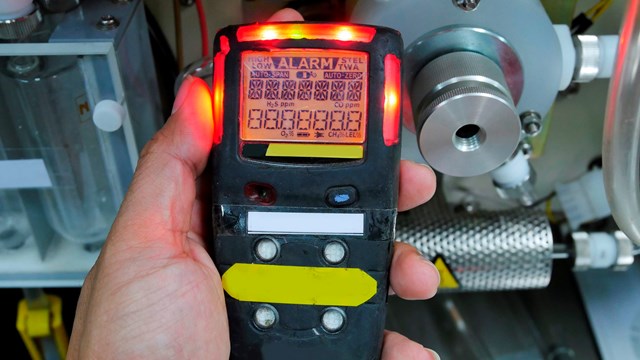After the devastating gas explosion in Harlem in 2014 that leveled a building, leaving eight people dead, and a second explosion in the East Village in 2015 that killed two and injured twenty, New York City passed Local Law 157 (LL157). While LL157 required smoke detectors and carbon monoxide detectors in every residence in New York City, it also noted that in the future, when there was a national standard for natural gas detection, the NYC DOB had 180 days to write a rule requiring natural gas detection in New York City.
While much of the real estate community forgot this future dependent clause of LL157, the National Fire Prevention Association (NFPA), Under Writer Laboratories (UL), and DeNova Detect®, who had pioneered natural gas detection in Japan, joined others to create a national standard. That standard was released in 2023 and the New York City Department of Building issued its draft rule in October of 2023. A public hearing was held in November and the final rule was issued on February 22,2024.
The rule closely follows the NFPA code, requiring that natural gas detectors be installed on the ceiling or within one foot of the ceiling, within ten feet horizontally of appliances, and no closer than three feet except where space does not allow, such as around gas driers. By May 1, 2025, the devices must be installed over all gas appliances in all residences in New York City. Class B residences, which are generally subsidized housing, allow hardwired systems designed by design professionals to be installed in hallways rather than over individual appliances.
The gas detectors must be listed and labeled with UL1484, which requires them to be tested by a Nationally Recognized Testing Agency (NRTL), either ETL or UL, to conform to the UL standard. As expected, there are many non-compliant devices on the market, and although the product literature may claim the device is “compliant,” it is important to check t that the device is actually labeled with the appropriate ETL or UL listed mark.
Buildings have three practical choices: Plug-in or battery powered “basic” devices that do not notify building staff; and battery powered “smart” devices that notify building staff.
Basic plug-in devices are available now using older technology that must be replaced every five years with a back-up battery which typically must be replaced every 6 months. As most apartments do not have an electrical outlet within one foot of the ceiling, this option will require hiring an electrician to install an outlet in each apartment.
Basic battery powered options are a low-cost option. There is no monitoring charge, and they do not require an electrician to install an outlet. This is a local alarm that announces that gas is detected, and the tenant should evacuate and call 911. This type of alarm depends on tenants to hear the alarm and call 911.
However, safer options exist. Smart battery powered options utilize a wireless network using a recent technology called Long Range Wide Area Network (LoRaWAN). When these devices sense the gas leak, they immediately notify the building’s front desk, resident manager, and property manager. The building’s staff can respond knowing 1) that the gas leak just started 2) the percentage of gas in the apartment expressed as % of gas that it would take to explode 3) the precise location of the leak, i.e., the stove in apartment 21J.
This allows the building staff to safely and swiftly respond, knowing exactly where the leak is and how dangerous it is to enter. As Edin Bojic, a resident manager and host of Building Talk, a podcast for New York’s Resident Managers said “You know how much time it takes to find the apartment? To go to the apartment and that five percent is becoming seven percent, it is becoming eight percent, 10 percent - and man, if it goes more, not only are you endangering one apartment, what the hell happens to the ones next door? Above, below, everywhere. You know it is a multiple, multiple issue, and God forbid there was an explosion.”
While the enhanced safety for the building of knowing the precise location and level of risk as soon as a gas leak starts makes the monitored detectors a “no-brainer;” it may come as a surprise that a sophisticated review of costs reveal that the monitored device is the most economical over 10 years.
Initially, plug in devices are the least expensive at $60 per detector, but they last only five years compared to 10 years for the battery powered devices, they require new back up batteries every six months, and as most apartments don’t have an outlet within a foot of the ceiling, they will require an electrician.
In the choice between the $79 basic battery device and the $219 smart battery device, beyond the potential catastrophic cost of a gas explosion in property and human life, managers must also include a calculation for the potential cost of a building gas shut down over the ten years.
Simply put, if the fire department cannot find a reported leak in an apartment building quickly enough, they will likely need to turn off the gas to the building. As every seasoned New York property manager will tell you, turning the gas back on requires a building-wide pipe pressure test that buildings almost always fail. In most instances, to pass the test, the building must be re-piped or even converted over to electric service.
For a 50-unit Manhattan co-op building, a prominent building plumber calculated the total cost to test, repipe the building and provide temporary boilers as $1,070,000. If the risk of building-wide shut down was 5% a year, over 10 years, that is a total risk of 50%, or $535,000. Decreasing that risk by a factor of ten, to .5% per year, the risk is still $53,500, which far exceeds the additional cost of the monitored detectors, even including the cost for the network and subscription.
Prudent building managers will educate owners/operators and cooperative and condominium boards to consider the ten-year cost including risk. While many buildings may still choose the basic battery powered device for simplicity and lower initial cost, many buildings will appreciate the true economy of the monitored system with risk considered, and welcome that it is also much safer for the building, tenants, and first responders.
Once the building has the monitoring network for gas installed, the same modular system makes it easy to add sensors for water leaks and heating oil leaks, leaking toiler flappers, boiler malfunctions, and sump pit leak detection. The same system can be equipped with automatic valves for maintenance and to limit future leak losses. For owners/operators, the same system can meter water usage as well as other utilities.
When Chubb Insurance notes their average water leak claim in New York costs $54,000 and a $60 dollar sensor can catch it within seconds, it is no wonder that insurers are beginning to demand that buildings install Point of Leak (PoL) water detection systems.
The technology that makes this all possible is Long Range Wide Area Network (LoRaWAN) that allows the low-cost battery powered devices to go 10 years without battery replacement and their radio receivers (gateways) to be installed every two or three floors in the building. The devices then communicate to the internet and applications using cellphone chips rather than the building’s internet connections.
While complying with yet another Local Law seems burdensome, now is a great time to consider taking the opportunity of installing monitored gas detection and its monitoring network to begin the transition to an overall low-cost Smart Building retrofit to lower repair costs and insurance costs, while increasing tenant satisfaction and building value, and most importantly saving lives.
John Rusk is the Co-Founder of ProSentry, a Risk Mitigation Service company that outfits buildings with low-cost wireless sensors. He may be reached at jrusk@prosentry.com.










Leave a Comment